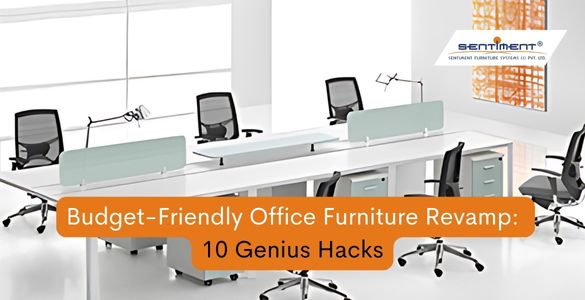
Anil Sharma (April 30, 2024 AT 4.00 PM)
In the realm of office design, the reception area plays a pivotal role. It serves as the first point of contact for visitors, clients, and potential employees, making it crucial to create an ambiance that reflects professionalism, style, and functionality. At the heart of this space lies the reception table, a focal point that sets the tone for the entire office experience.
The reception table serves as more than just a piece of furniture; it embodies the essence of the company's brand identity and culture. A well-designed reception table not only welcomes guests but also communicates the values and aspirations of the organization. From sleek and modern designs to classic and elegant styles, there are countless options to choose from, each offering unique features and benefits.
Before selecting a reception table, it's essential to assess the available space in the reception area. The table should complement the dimensions of the room while allowing for comfortable traffic flow.
The design of the reception table should align with the company's brand identity and aesthetic preferences. Whether it's a minimalist design for a tech startup or a luxurious finish for a law firm, the table should reflect the organization's values and image.
Beyond aesthetics, functionality is key when choosing a reception table. Consider factors such as storage options, cable management, and accessibility to power outlets for electronic devices.
Since the reception area experiences high traffic, durability is paramount. Opt for materials that are sturdy and easy to maintain, such as wood, metal, or high-quality laminates.
Comfort is essential for both guests and reception staff. Choose seating options that are ergonomic and supportive to ensure a positive experience for visitors.
Clean lines, sleek surfaces, and minimalist aesthetics characterize modern reception table designs. These tables often feature materials like glass, chrome, or polished wood, creating a contemporary and sophisticated look.
For a timeless appeal, classic reception tables with ornate detailing and rich finishes are an excellent choice. These tables exude elegance and refinement, making a lasting impression on guests.
Some reception tables are designed to offer versatility and adaptability. Modular designs with interchangeable components allow for customization based on the specific needs of the space.
In today's digital age, many reception tables come equipped with integrated technology features such as built-in charging stations, touchscreen displays, and multimedia connectivity options, enhancing both functionality and aesthetics.
The reception table serves as the centerpiece of the office reception area, playing a crucial role in shaping the overall experience for visitors and employees alike. By carefully considering factors such as space constraints, brand identity, functionality, and design preferences, organizations can choose a reception table that not only makes a memorable first impression but also reflects their values and aspirations.
A1: A well-designed reception table enhances the overall aesthetics of the office space and creates a positive first impression on visitors. It also contributes to improved functionality, organization, and brand representation.
A2: Consider elements such as color schemes, materials, and design aesthetics that reflect your company's brand values and image. Collaborating with a professional designer can also help ensure that the reception table complements your brand identity.
A3: Common materials used in reception table construction include wood, metal, glass, laminate, and acrylic. Each material offers unique aesthetic and functional characteristics, allowing for customization based on design preferences and budget considerations.
A4: When selecting seating for the reception area, consider factors such as comfort, durability, style, and space constraints. Opt for ergonomic chairs that provide adequate support for guests and reception staff while complementing the design of the reception table.
A5: To optimize functionality, consider features such as built-in storage options, cable management systems, integrated technology solutions, and customization possibilities. Prioritize features that enhance efficiency, organization, and convenience for both guests and reception staff.

Office Reception Table Design

Office Furniture Design: Crafting Workspaces for Productivity and Comfort

Luxury Office Chairs in India

Luxury Executive Office Chairs

Professional Office Luxury Boss Office Table Design

Modern VIP Luxury Boss Office Table Design

Small Office Boss Cabin Design

Comfort & Style: Finding the Perfect Office Furniture in Hyderabad

Office Furniture Manufacturers: Choosing Quality, Comfort, and Style for Your Workspace

10 Genius Hacks to Revamp Your Office Furniture on a Budget

10 Genius Hacks to Revamp Your Office Furniture on a Budget
.jpg)
Find quality & affordable modular office furniture?

Transform Your Office With Stylish Furniture